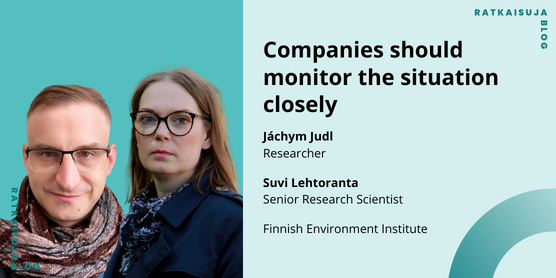
The environmental impacts of products are increasingly important to many in making purchase decisions. Companies communicate environmental performance of their products in different ways.
Environmental labels have been developed to help us make the right decision. However, the range of environmental labels and claims has increased so much in recent years that navigating them is starting to be a real challenge both for consumers, as well as for businesses. Which product is truly more environmentally friendly? What methods should a business use to substantiate its environmental claims? Trust in environmental claims in general is at risk.
This is where the story of the EU Environmental Footprint (EF) starts. It was born out of the need for life cycle assessment (LCA) methodology suitable for product comparison. LCA is a method used to simultaneously quantify multiple environmental impacts related to the life cycle of a product or service. It is widely used in research and business.
Although being standardized, the methodology offers a significant level of freedom in its implementation, potentially leading to diverse results. The EF methodology aims at increasing the consistency, accuracy and comparability of the results within the same product category.
The methodology sets the playing rules the same for all by introducing a detailed step-by-step guidance on how to perform an EF study, limiting the freedom of choice. As such, the EF can empower the Single Market for Green Products by being better suited as a product policy instrument.
In fact, the EU Environmental Footprint is already making its way into European policies after the publication of the official Recommendation on the use of the Environmental Footprint methods in 2021. For example, the recent proposal for the updated Ecodesign directive (ESPR) explicitly mentions the Environment Footprint as the tool used for quantifying environmental impacts of products and services.
EU Environmental Footprint is here to stay in one way or another
Although the future of the EU Environmental Footprint as the tool still remains unclear, the incorporation of the method, or its elements, in important EU-wide policies such as this one indicates that it is here to stay in one way or another.
Frontrunner companies from selected industrial sectors took part in developing the EF rules and gained competitive advantage that way. Understanding the EF methodology is becoming critical for companies.
The Finnish Tassunjälki project funded by the Finnish Ministry of Agriculture and Forestry enabled the Finnish Fur Industry (Fifur) to test the application of the EU EF method. Together with the Finnish Environment Institute (Syke) and the Natural Resources Institute Finland (Luke) the industry increased their understanding of the method, its benefits and limitations.
The takeaway from the project is that the implementation of the EF in company level is challenging. The EF method is complex and requires skilled workforce. With the expected widespread use of the method, there will be a need for the implementation support.
No method is perfect once it is introduced. That applies on the EU Environmental Footprint, too. Only by applying can the method be developed further. A constructive feedback based on the experiences from such projects as Tassunjälki is useful to the European Commission.
In conclusion, it is time to start paying attention to the method as it has a potential of becoming the only acceptable way to substantiate environmental claims of products and services on the common European market. It is time to brace for it.
Jáchym Judl is a researcher at SYKE, interested in everything connected to life cycle assessment. He uses the method to save the World. He spends his free time with his two daughters, by following the world of (electric) cars and by trying to stay up-to-date with what is going on in the world.
Suvi Lehtoranta works as a Senior Research Scientist at SYKE. She studies the life-cycle environmental impacts of biomass utilization. In her spare time, she enjoys the sea or by the campfire with her family.
References
European Commission. 2022. EU COM 2022/0095 Proposal for a regulation of the European Parliament and of the Council establishing a framework for setting ecodesign requirements for sustainable products and repealing Directive 2009/125/EC.
European Commission. 2021. Commission Recommendation (EU) 2021/2279 of 15 December 2021 on the use of the Environmental Footprint methods to measure and communicate the life cycle environmental performance of products and organisations. Official Journal of the European Union L 471/1(December 2021): 396.
Judl, J., S. Horn, J. Niemistö, J. Suikkanen, D. Lazarevic, and K. Lepistö. 2021. SYKE presents: Life Cycle Assessment (LCA).
Nissinen, A., J. Suikkanen, and H. Salo. 2019. Product Environmental Information and Product Policies - How Product Environmental Footprint (PEF) changes the situation?
Opinions of blog contributors do not necessarily reflect the official views and opinions of the Finnish Environment Institute.